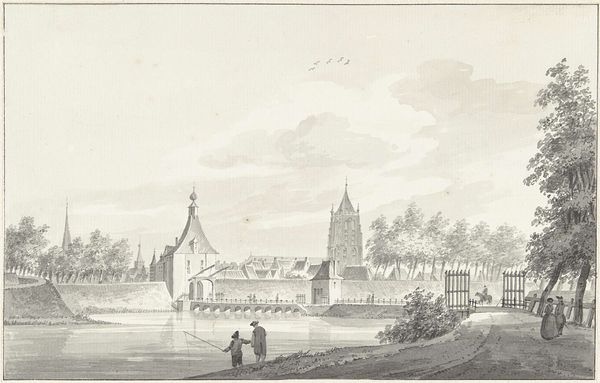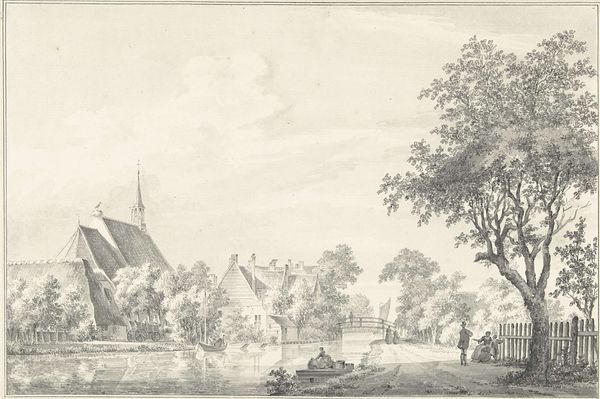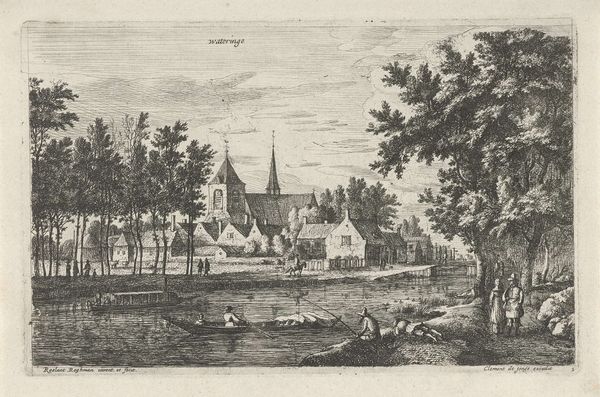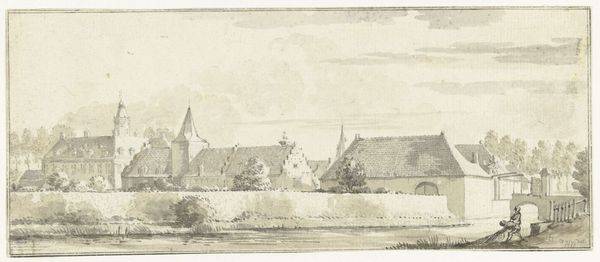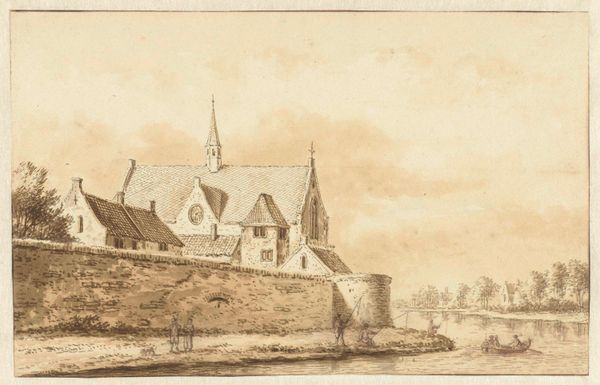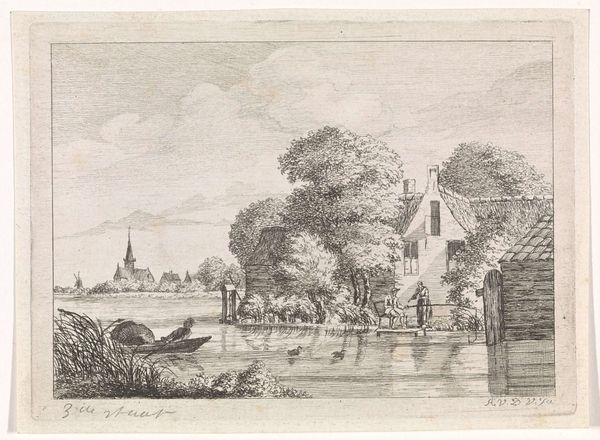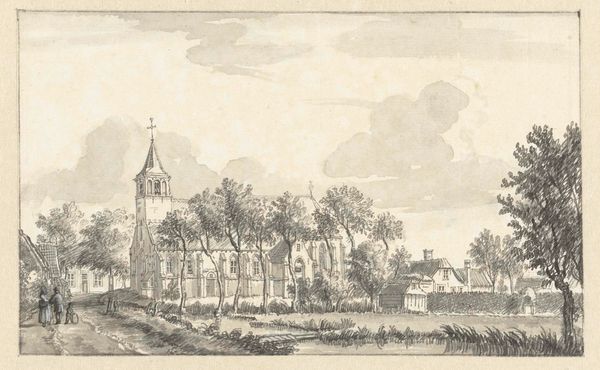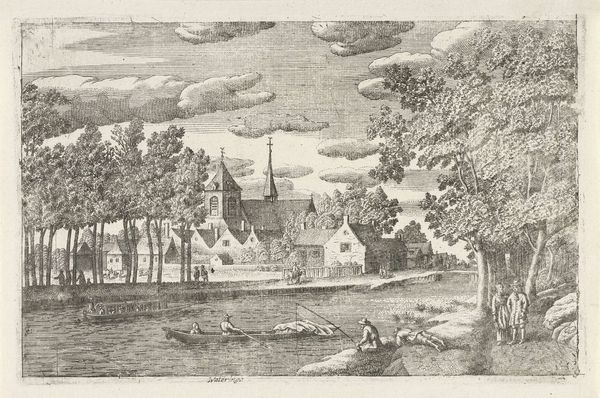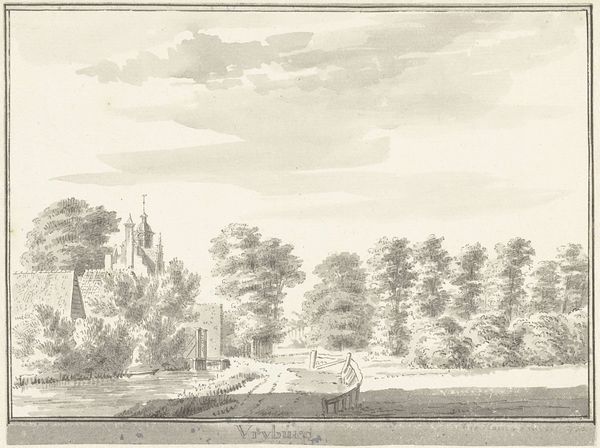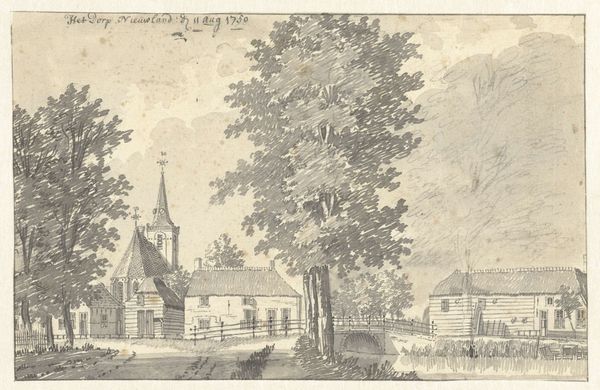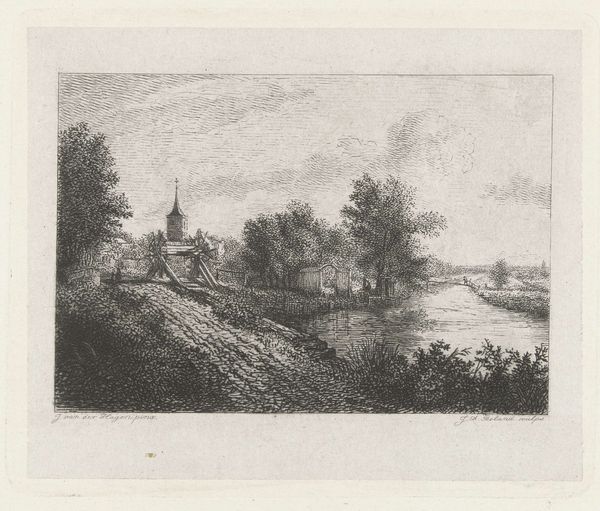
drawing, paper, ink, pen
#
drawing
#
dutch-golden-age
#
landscape
#
paper
#
ink
#
pen
#
cityscape
#
genre-painting
#
realism
Dimensions: height 128 mm, width 203 mm
Copyright: Rijks Museum: Open Domain
Editor: Okay, next up we have "Het dorp Molenaarsgraaf," a pen and ink drawing on paper by Theodorus Cornelis Schutter, dating back to 1756. It’s quite a tranquil scene; almost frozen in time, with all those subtle grey tones. I’m particularly drawn to how detailed everything is. What do you see in this piece? Curator: For me, this isn't just a quaint village scene; it’s a glimpse into the Dutch Golden Age with a slightly later flavor. I see a world captured with precision and a deep understanding of light. Notice how Schutter uses different densities of ink to suggest depth. It reminds me of old photographs, somehow. It’s so still; makes you wonder what stories are hiding within those houses, doesn’t it? What do you feel when you look at the two figures on the road? Editor: That's interesting! They almost look like they’re observing the same scene, pointing out details to each other, perhaps? It reinforces that 'moment in time' feeling. I didn’t really consider how carefully the light was rendered, now that you mention it. It almost looks like he captured the dampness in the air, that sense of diffused daylight. Curator: Exactly! And that sense of observation, that curiosity, that’s the soul of realism. It's not just seeing, it's feeling the scene. It’s the quiet conversation happening between the artist, the subject, and now, us. Does knowing it's from the Dutch Golden Age change how you view it? Editor: It does. Knowing the cultural context makes it richer. I initially just saw a pretty landscape, but now I see it as a historical document, a slice of 18th-century life. Curator: It’s funny how art does that, isn’t it? Layers upon layers, waiting to be uncovered with each look. What a treat to see a world so carefully rendered. Editor: Absolutely. It’s made me appreciate the depth within what initially seemed like a simple drawing.
Comments
No comments
Be the first to comment and join the conversation on the ultimate creative platform.

